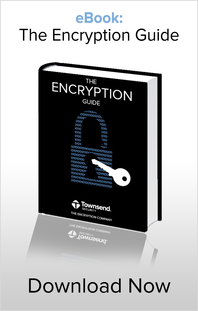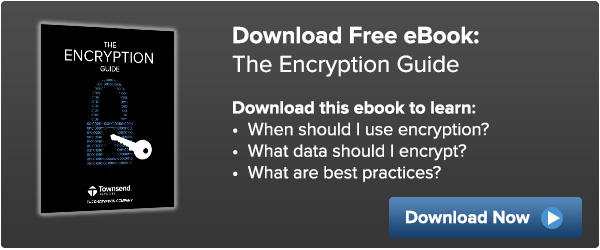The new European Union General Data Protection Regulation (EU GDPR) has now passed both the EU Council and Parliament and replaces the earlier Data Protection Directive (Directive 94/46/EC). Unlike an EU directive, this regulation does not require individual countries to pass legislation and it goes into effect immediately. Organizations have a two-year transition period to comply with the new data protection regulations, but it would be unwise to delay. Smart organizations will start work immediately so that there are no gaps upon the arrival of the deadline, and so that their public reputation is preserved. A good overview of the regulation can be found here and it contains a link to the full regulation.
 There are many aspects to the new GDPR, and if you are required to meet the regulation you should take a very close look at the entire publication. Let’s look at a few of the elements of the GDPR with a focus on data protection.
There are many aspects to the new GDPR, and if you are required to meet the regulation you should take a very close look at the entire publication. Let’s look at a few of the elements of the GDPR with a focus on data protection.
What information must be protected?
The regulation uses two terms that are important to understand. The term “data subject” means an individual person. The term “personal data” means any data that either directly identifies an individual person, or which can be used indirectly to identify an individual. A few examples of data that indirectly identify an individual would include a medical identification number, location data such as an IP address, or social identity such as an email address or Facebook account.
The definition of personal information is quite broad. It would be a mistake to narrowly focus on just a few fields of data in your database, you should look for all information about a person that you store. If any information uniquely identifies a person, or if information can be combined to identify a person, it should be protected.
What constitutes a data breach?
The definition of a data breach is much broader than defined in the US. It certainly includes the the accidental loss of data or the loss of data in the course of a data breach by cybercriminals. But it also includes other activities including the accidental or unlawful:
- Destruction of personal information.
- Alteration of personal information.
- Unauthorized disclosure of information, even without criminal intent.
- Access to personal information.
In other words, assume that the data you store about an individual belongs to them exclusively, and is valuable. You are holding it in trust, and you have a fundamental responsibility to preserve and protect that information! This will be a conceptual challenge for organizations more familiar with US data protection rules.
Non-EU organizations should pay special attention to this definition of a data breach. It goes far beyond what typical regulations in the US define as a data breach.
What are my breach notification requirements?
The data breach definition applies to all personal information that is transmitted (data in motion) or stored (data at rest) or in any other way processed by your organization. In the event you experience a data breach you must notify the appropriate authorities and the individuals who are affected. There are stringent time constraints on the notification requirements and this will require special preparation to meet those requirements.
Important note: If your data is encrypted you may be exempt from some notification requirements (from Article 32):
The communication of a personal data breach to the data subject shall not be required
if the controller demonstrates to the satisfaction of the supervisory authority that it has implemented appropriate technological protection measures, and that those
measures were applied to the data concerned by the personal data breach. Such
technological protection measures shall render the data unintelligible to any person
who is not authorised to access it.
Who is covered by the regulation?
The GDPR uses the special term “Controller” for an organization that transmits, stores, or processes personal information. You are a Controller of personal information if in any way you transmit, store or process personal information. This applies in equal measure to service organizations that receive personal information in a secondary capacity.
The GDPR also uses the special term “Processor”. You are a Processor if personal information flows through a system that you control. This applies to information you provide to other organizations and to third party computing service providers such as cloud service providers (CSPs).
Are non-EU organizations covered by the EU GDPR?
Yes, if you are located outside of the EU but are doing business in the EU or operating in the EU (you are a controller or processor of personal information of EU citizens), you fall under the requirements of the EU GDPR. This will surprise many organizations who do not have offices or employees located in the EU zone.
Are there any special categories for protection?
The EU General Data Protection Regulation establishes some special categories of individuals and information that come in for additional controls. Information about children and the information of medical patients require special attention on the part of organizations who process this type of information.
What are the penalties for non-compliance with data protection requirements?
While there is some flexibility in how fines are levied for unintentional non-compliance to the GDPR and depends somewhat on which rules you are out of compliance with, the penalties can be quite severe. The failure to protect sensitive data with encryption with appropriate technical controls is considered a severe violation. No one should ignore the potential impact of these fines. For example, an enterprise that fails to protect data can be subject to fines of up to 1,000,000 EUR (1 Million Euro) or up to 2 percent of annual worldwide revenue. You can see why this new regulation is getting a lot of attention in the European Union!
See Article 79 of the GDPR for more information about fines and penalties:
Is encryption a mandate?
This is from the GDPR recitals:
(23) The principles of protection should apply to any information concerning an identified
or identifiable person. To determine whether a person is identifiable, account should
be taken of all the means likely reasonably to be used either by the controller or by any
other person to identify the individual. The principles of data protection should not
apply to data rendered anonymous in such a way that the data subject is no longer
Identifiable.
The most common way of making data anonymous is encryption with good encryption key management.
And you should know this from Article 30 of the GDPR:
1. The controller and the processor shall implement appropriate technical and
organisational measures to ensure a level of security appropriate to the risks
represented by the processing and the nature of the personal data to be protected,
having regard to the state of the art and the costs of their implementation.
2. The controller and the processor shall, following an evaluation of the risks, take the
measures referred to in paragraph 1 to protect personal data against accidental or
unlawful destruction or accidental loss and to prevent any unlawful forms of
processing, in particular any unauthorised disclosure, dissemination or access, or
alteration of personal data.
It is likely that in almost all cases the only appropriate technical measure to ensure anonymization and security appropriate to the risk of loss is encryption with appropriate key management controls. When encryption is not specifically required we sometimes call this a “backdoor” mandate - you are not required to implement encryption, but in the context of a data breach anything else will be deemed inadequate, and subject the organization to fines. You don’t want that to happen to you.
I hope this helps you understand the basic data protection requirements of the new EU General Data Protection Regulation. I know that the regulation is complex and there remain some ambiguities. In future blog posts I will go into more detail on various aspects of the GDPR and how our solutions at Townsend Security are helping EU organizations meet the data protection requirements.

